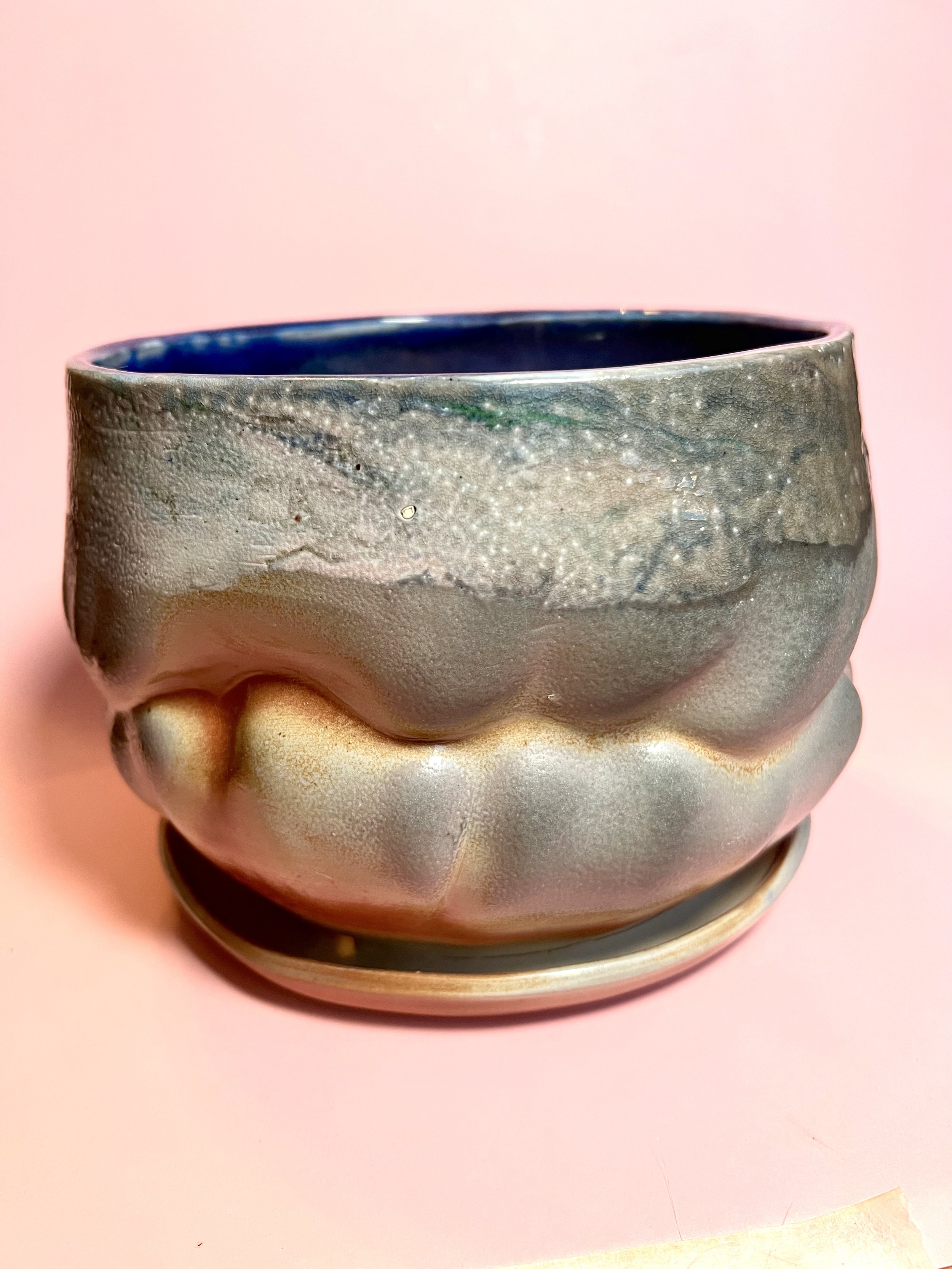 Image 1 of 8
Image 1 of 8

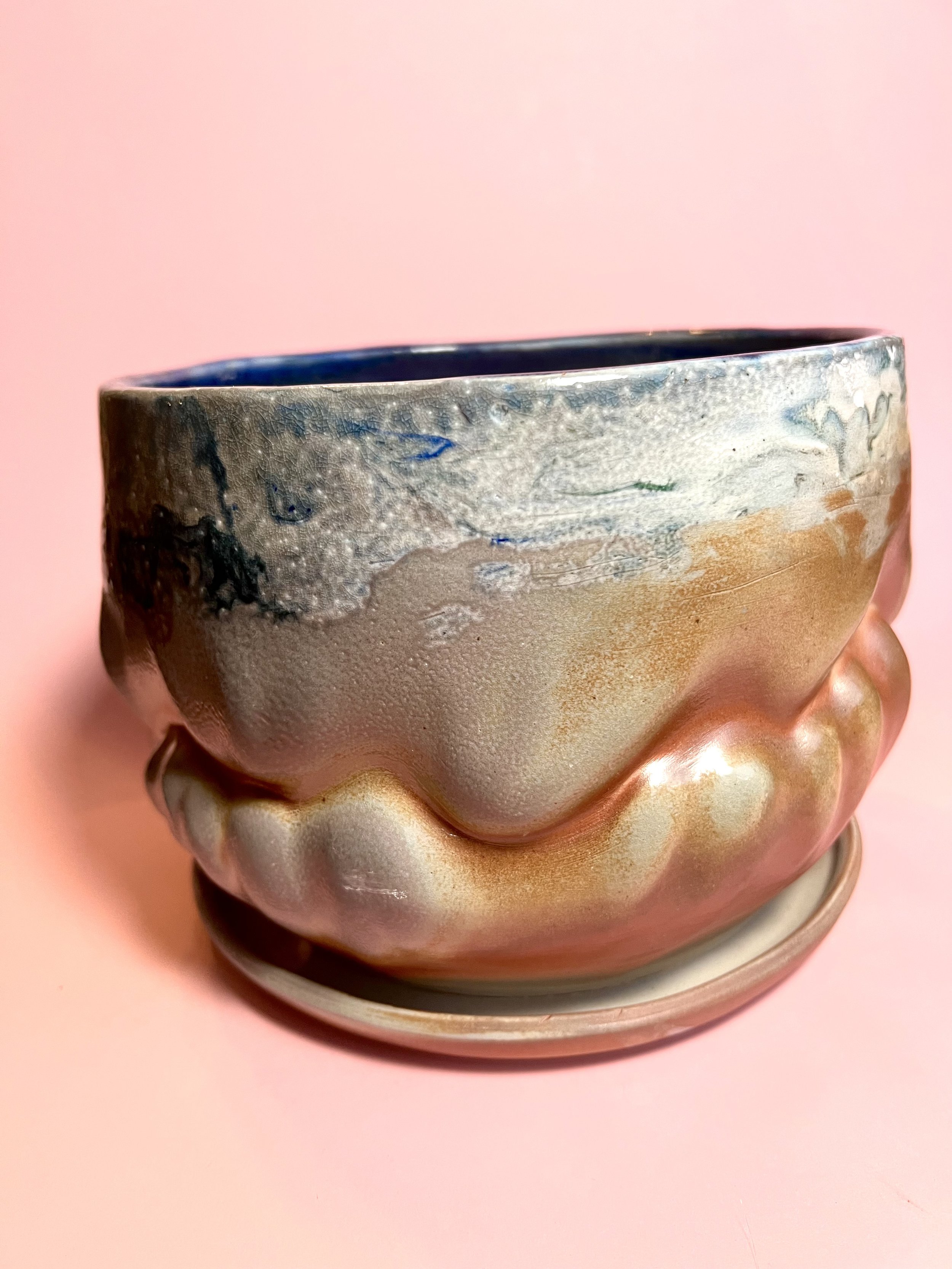 Image 2 of 8
Image 2 of 8

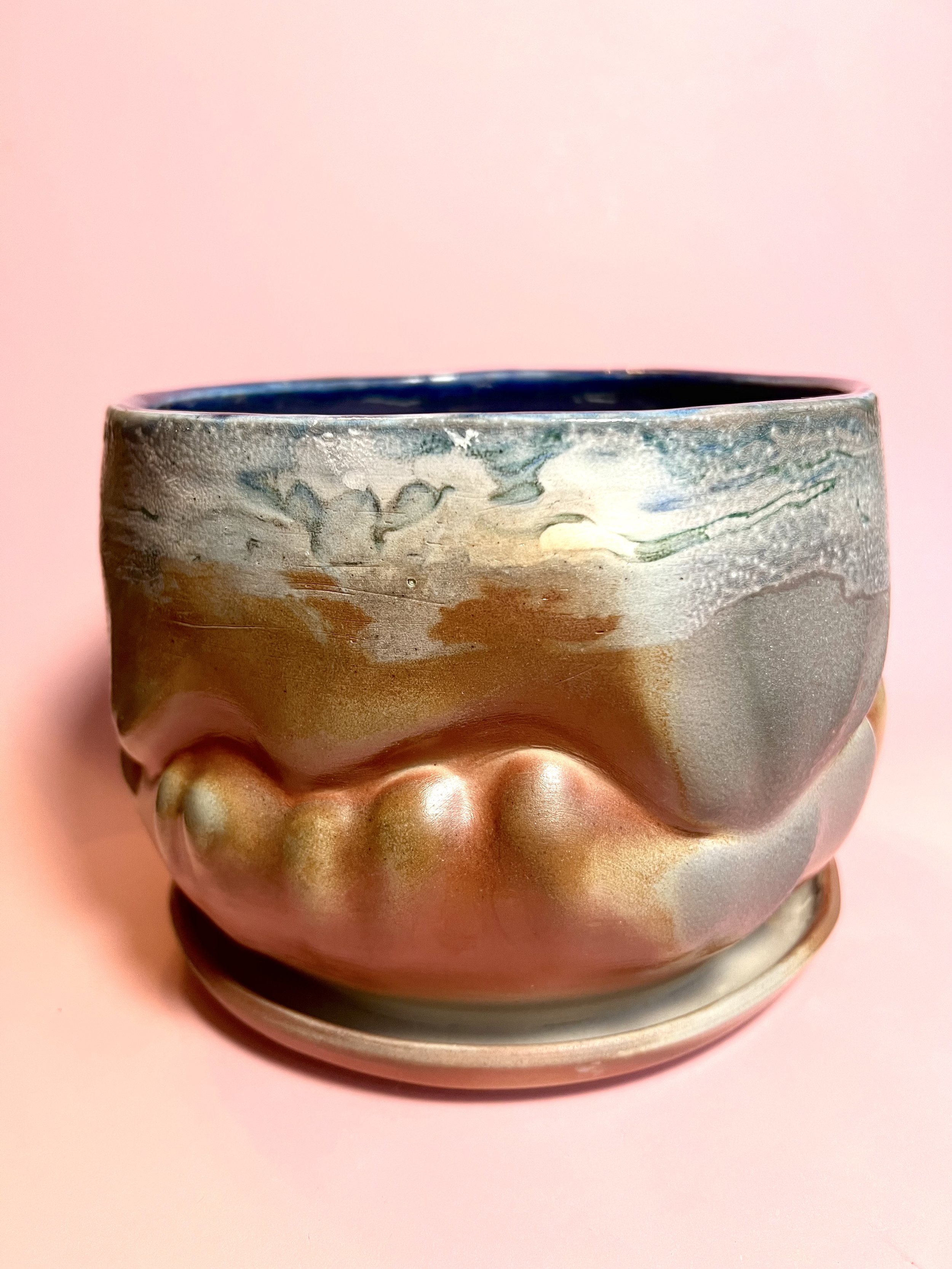 Image 3 of 8
Image 3 of 8

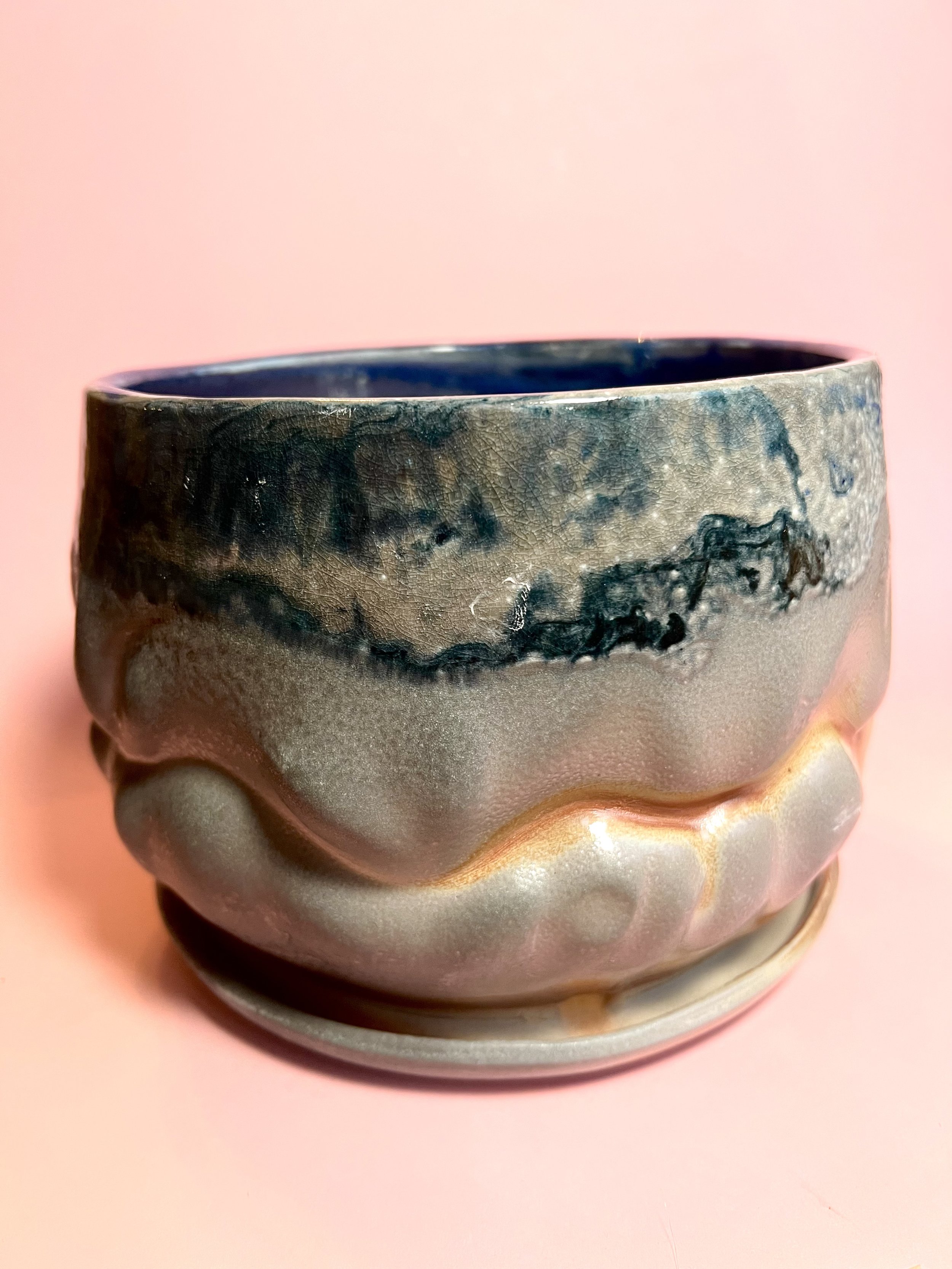 Image 4 of 8
Image 4 of 8

 Image 5 of 8
Image 5 of 8

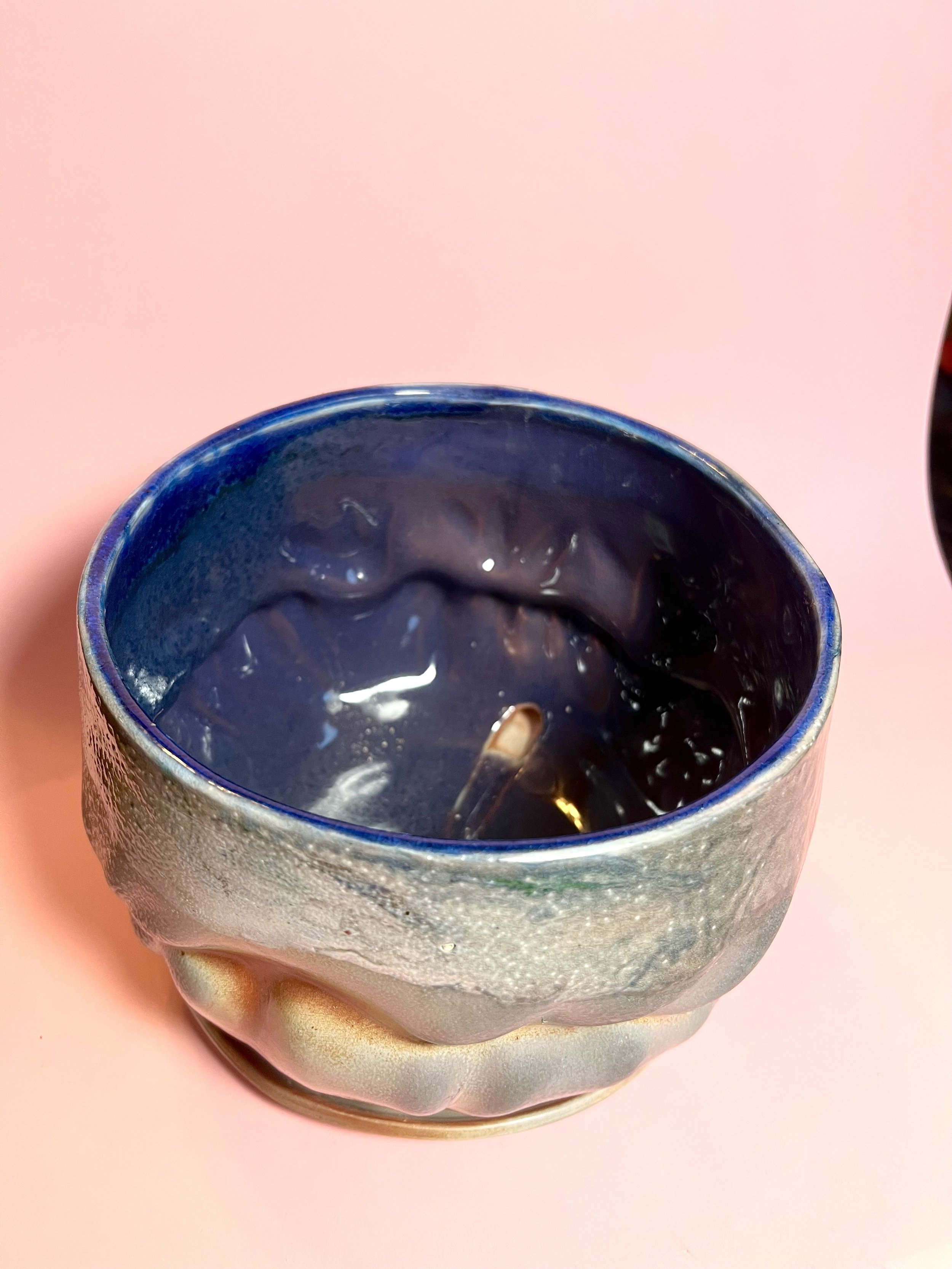 Image 6 of 8
Image 6 of 8

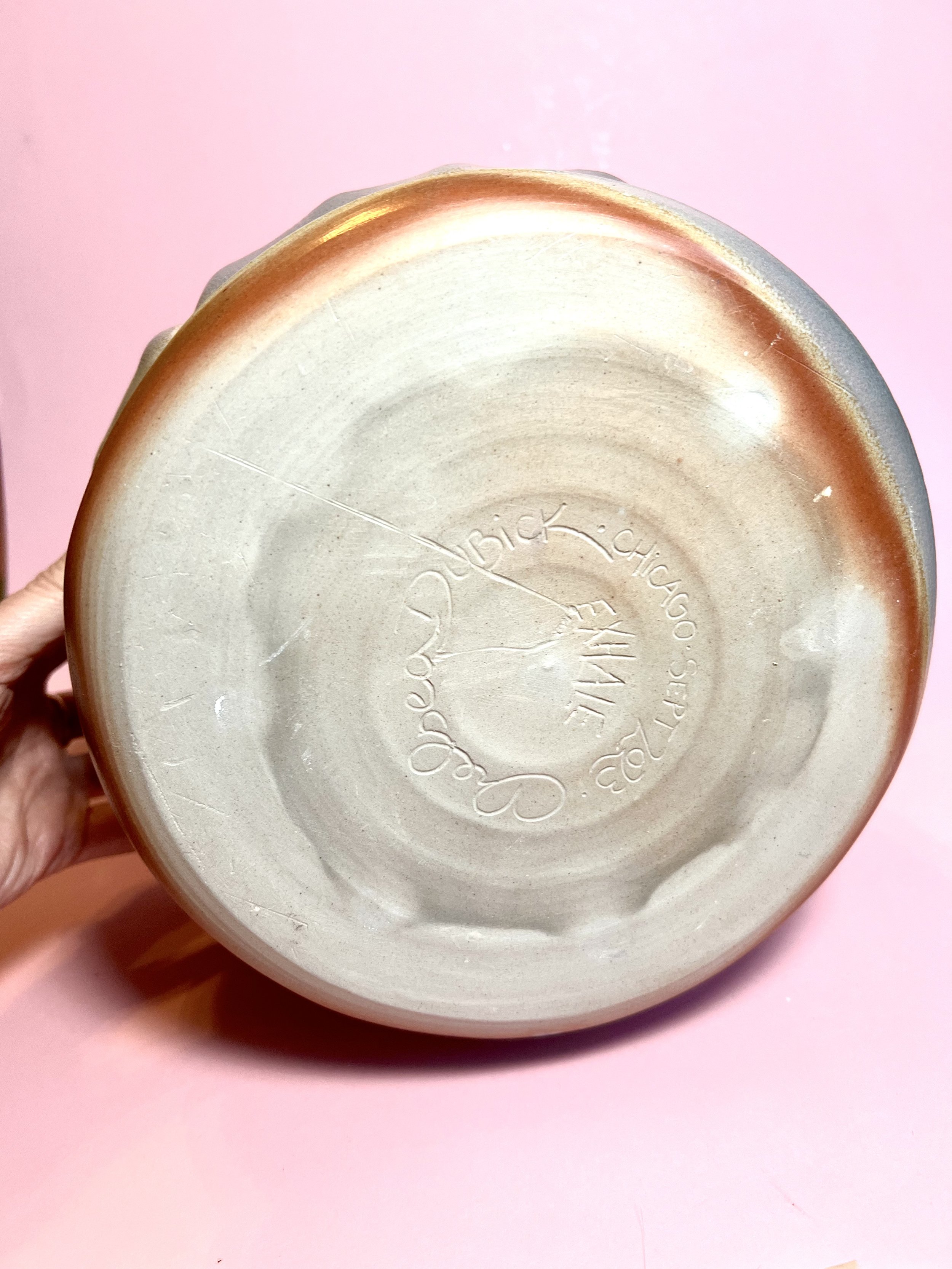 Image 7 of 8
Image 7 of 8

 Image 8 of 8
Image 8 of 8









Planter: Toasty Altered Marbled (Medium)
This piece combines several of the methods I like to play with. It was thrown with a marbled coil of colored clay along the top then altered by hand and soda fired.
To create marbled clay I stain the porcelain several different colors with mason stains then lightly wedge them together and leave them for a week so the clays can acclimate to the same moisture level . Then I add marbled slices and coils to my clay to throw on the wheel. Once dryer I trim or scrape the entire piece to reveal the swirling, unpredictable patterns.
The cloudlike alterations are formed, carved and smoothed in several stages.
Each soda fired piece is one-of-a-kind as atmospheric firings are unpredictable and can yield stunning results. Soda firing takes an enormous amount of time, energy, labor and resources and is usually a community effort. In the soda firing process, soda ash (sodium carbonate) is added to the kiln at cone 9 (2300°) and the sodium vapor combines with silica in clay to form sodium-silicate glaze. The soda also interacts with the slips and glazes to create swirling unpredictable colors that shift and change around the piece.
The bottom has been sanded level. Drainage holes between the vessel and the attached plate.
This piece combines several of the methods I like to play with. It was thrown with a marbled coil of colored clay along the top then altered by hand and soda fired.
To create marbled clay I stain the porcelain several different colors with mason stains then lightly wedge them together and leave them for a week so the clays can acclimate to the same moisture level . Then I add marbled slices and coils to my clay to throw on the wheel. Once dryer I trim or scrape the entire piece to reveal the swirling, unpredictable patterns.
The cloudlike alterations are formed, carved and smoothed in several stages.
Each soda fired piece is one-of-a-kind as atmospheric firings are unpredictable and can yield stunning results. Soda firing takes an enormous amount of time, energy, labor and resources and is usually a community effort. In the soda firing process, soda ash (sodium carbonate) is added to the kiln at cone 9 (2300°) and the sodium vapor combines with silica in clay to form sodium-silicate glaze. The soda also interacts with the slips and glazes to create swirling unpredictable colors that shift and change around the piece.
The bottom has been sanded level. Drainage holes between the vessel and the attached plate.
